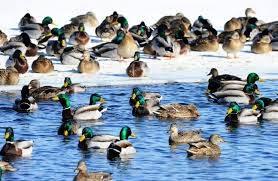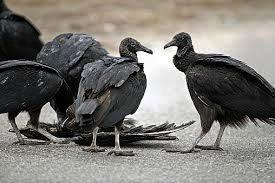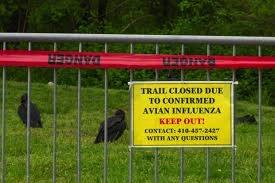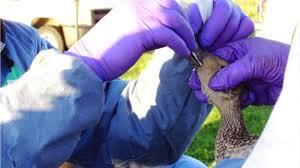 A recent news item presented the views of Dr. Kyle Van Why, a wildlife biologist with USDA-APHIS Wildlife Services. Dr. Van Why noted that his Agency is sampling dabbling ducks including mallards, teals and wood ducks that are known to be infected with various strains of avian influenza virus and specifically, the 2022-2024 H5N1 epornitic strain.
A recent news item presented the views of Dr. Kyle Van Why, a wildlife biologist with USDA-APHIS Wildlife Services. Dr. Van Why noted that his Agency is sampling dabbling ducks including mallards, teals and wood ducks that are known to be infected with various strains of avian influenza virus and specifically, the 2022-2024 H5N1 epornitic strain.
Dr. Van Why correctly noted that the mild winter encouraged ducks to congregate in mid-migration until the severe storm of mid-January that resulted in southward migration. He stated, “We just didn’t have a full push until we had that one winter storm in January and then we had a big push of birds down and then they were gone.”

Perhaps by concentrating on dabbling ducks, the USDA-APHIS is missing other non-clinically affected carrier species of HPAI. If dabbling ducks are in their winter habitat along the Gulf, why did outbreaks occur in backyard flocks in diverse states including Massachusetts, Ohio, Texas and Minnesota during the week ending March 11th in addition to a case affecting commercial turkeys in South Dakota? Logic would suggest that domestic resident free-living birds have become infected along with carnivorous scavenging mammals that may transmit the virus for, as yet, undetermined periods. Backyard poultry housed with minimal biosecurity have little involvement with the infection of commercial flocks but serve as sentinels.
It would be of value for APHIS to sample a range of wild birds in the vicinity of confirmed outbreaks of HPAI both in backyard and commercial flocks. It would also be of value to determine the duration and quantum of viral shedding in individual species. There is  considerable literature on the recovery of avian influenza viruses from orders other than Anseriformes and susceptibility of migratory and resident domestic bird species has been demonstrated by both surveys and through widespread mortality.
considerable literature on the recovery of avian influenza viruses from orders other than Anseriformes and susceptibility of migratory and resident domestic bird species has been demonstrated by both surveys and through widespread mortality.
An additional aspect of research is assessing the persistence of avian influenza virus in water and soil although this has been investigated for strains of LPAI1. Even more important will be to determine the distance over which avian influenza virus can be spread by the aerogenous route under a range of weather conditions. There is adequate circumstantial and anecdotal evidence to suggest that the virus can be introduced into power- ventilated layer houses. Multitier units holding 200,000 hens may have a maximum exhaust displacement of 1.2 million ft3 per minute and even 400,000 ft3 per minute as a minimum rate during cold conditions.
 If avian influenza is carried by a wide range of free-living bird species that are resident in the vicinity of poultry farms, the previous model of seasonal dissemination by migratory waterfowl is outdated2. To concentrate on sampling hunter-killed dabbling ducks based on ease of attainment will provide prevalence rates in the species sampled but it will not advance our knowledge of the epidemiology of avian influenza and specifically H5N1.
If avian influenza is carried by a wide range of free-living bird species that are resident in the vicinity of poultry farms, the previous model of seasonal dissemination by migratory waterfowl is outdated2. To concentrate on sampling hunter-killed dabbling ducks based on ease of attainment will provide prevalence rates in the species sampled but it will not advance our knowledge of the epidemiology of avian influenza and specifically H5N1.
It is questioned whether the administrators at APHIS are allocating sufficient resources to their field biologists and veterinarians to obtain an understanding of the changing epidemiology of avian influenza? Are field projects and investigations constrained by past actions or prevailing policies? Are we going to look back on the ongoing epornitic since 2022 in successive years and ask why we lacked imagination and flexibility in our approach to field evaluation that deprived us of an understand of the role of non-Anseriform avian reservoirs and disseminators of the disease?
1. Stallknecht, D. E., et al., Persistence of Avian Influenza Viruses in Water, Avian Diseases, 34:406-411 (1990)
2. Stallknecht, D. E. and Shane, S.M., Host Range of Avian Influenza Virus in Free-Living Birds, Veterinary Research Communications, 12:125-141 (1988)